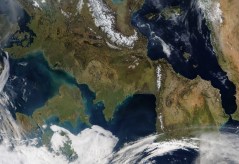Innovative Classroom Activities to Explore the Legacy of Christopher Columbus
Teaching about Christopher Columbus can be an enriching experience for students, allowing them to explore not only his voyages but also their impact on world history. Through innovative classroom activities, educators can help students critically engage with the legacy of Columbus, fostering discussions around exploration, cultural exchange, and historical perspectives. Here are some creative ways to delve into this topic.
Interactive Map Creation
One engaging activity is having students create interactive maps of Columbus’s voyages. Using simple materials or digital tools like Google My Maps, students can plot significant locations related to Columbus’s expeditions, such as Spain, the Canary Islands, and various Caribbean islands. Encourage them to include details about each location’s significance and effects of his encounters with indigenous populations. This activity not only helps students visualize geographical concepts but also sparks discussions about navigation and exploration during the Age of Discovery.
Role-Playing Historical Figures
Another dynamic way to engage with Columbus’s legacy is through a role-playing exercise where students assume the identities of key historical figures from that era. Assign roles such as Christopher Columbus himself, members of his crew, indigenous leaders from the Caribbean islands he encountered, and critics from Europe who opposed his journeys. Students can prepare brief presentations or debates representing their characters’ viewpoints on exploration and its consequences. This activity encourages empathy and critical thinking as they consider multiple perspectives surrounding these historical narratives.
Art Projects Celebrating Cultural Exchange
Art projects can provide a creative outlet for exploring the themes associated with Columbus’s voyages. Students might create art pieces showcasing cultural exchanges between Europeans and indigenous peoples—highlighting both positive aspects (like sharing knowledge) and negative impacts (such as colonization). They could use various mediums like painting or collage to illustrate their interpretations while discussing what these exchanges meant for both cultures involved. This project promotes artistic expression while reinforcing lessons in cultural appreciation.
Research Presentations on Indigenous Cultures
To broaden understanding beyond European perspectives, assign research projects focused on the diverse indigenous cultures that existed before Columbus arrived in America. Students can work in small groups to investigate specific tribes or civilizations—examining their customs, beliefs, lifestyles, and responses to European colonization efforts post-1492. Presentations can take various forms—from traditional oral reports to multimedia presentations—giving students agency in how they share what they’ve learned about these rich histories.
Reflective Writing Assignments
Incorporate reflective writing assignments where students express their thoughts on what they have learned regarding Christopher Columbus’s legacy. Prompts might include questions like “What do you think about Columbus’s contributions versus the consequences for indigenous peoples?” or “How does understanding this history shape your view of exploration today?” These reflections allow for personal connections with historical content while developing critical writing skills.
By implementing these innovative classroom activities centered around Christopher Columbus’s legacy, educators provide valuable opportunities for critical discussion among students about exploration’s complexities throughout history. Engaging student creativity while promoting thorough analysis ensures that learners not only absorb facts but develop a nuanced understanding of past events.
This text was generated using a large language model, and select text has been reviewed and moderated for purposes such as readability.






